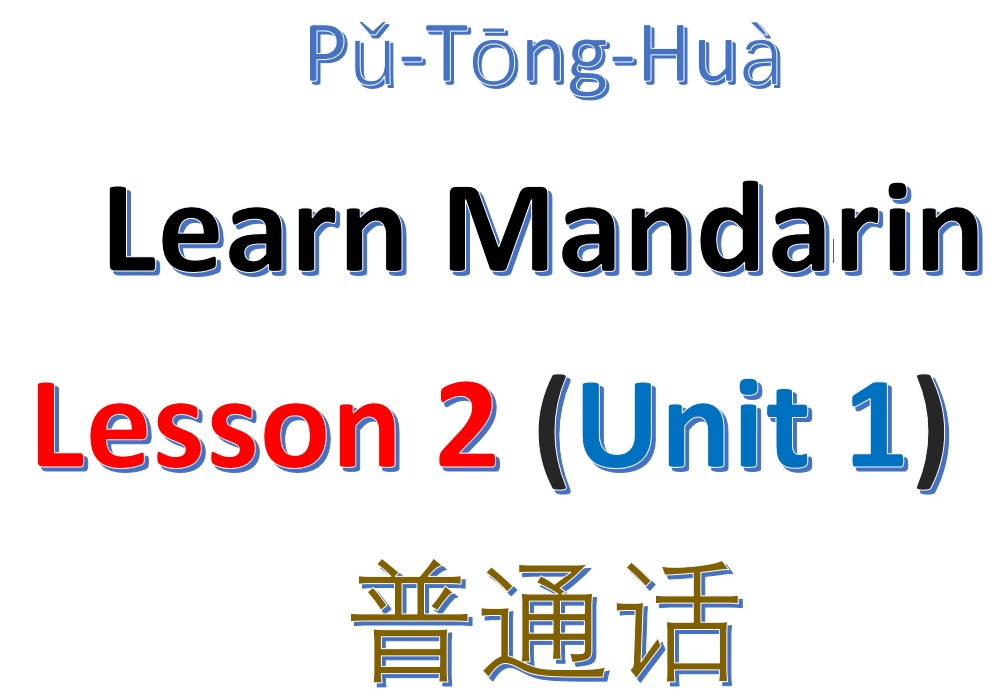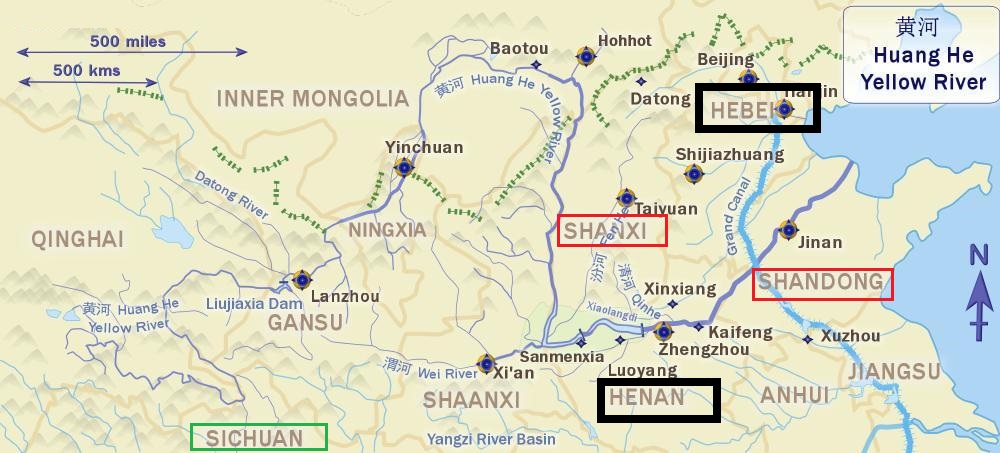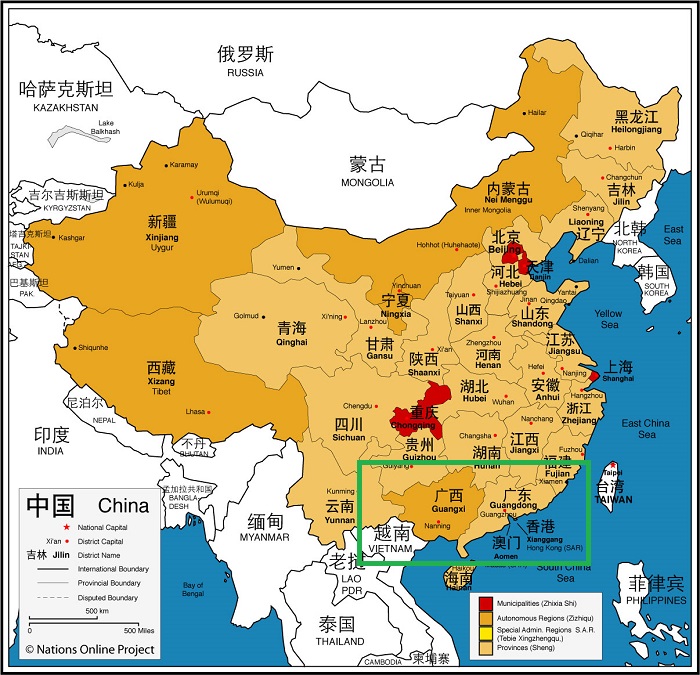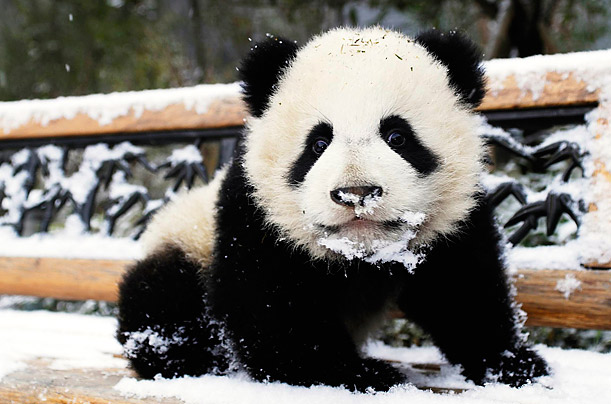Welcome to Lesson 2 (Unit 1) of SKMLifestyle’s Chinese Language course. In this lesson we’ll learn about the Chinese geography. We’d basically build upon what we’ve already learnt in Lesson 1 (check out all lessons from Unit 1). So if you haven’t read Lesson 1, please go through it first. For more details on background information about the Chinese language basics, please refer to the Unit 0. Throughout this lesson, I’ll assume that you have been through the Lesson 1. 🙂 Without any further delay, now let’s learn Chinese language.

As always, we’ll learn Chinese characters, quite many of them. Are you ready?
Geography of china
China is indeed a big country (larger than the USA, both area and population wise). Administratively, the country is broadly divided into municipalities (e.g. Beijing, Shanghai), provinces (e.g. Hubei, Hebei), and autonomous regions (e.g. Jiangxi, Macau, Hong Kong). The names of these regions are often based on the names of neighboring geographic features (mountains, lakes, rivers). Today we’re going to learn the name of some of the administrative regions of China.
Chinese rivers – Chinese language basics
There are four great ancient civilizations on our planet Earth, one of them is the Yellow River Civilization that flourished around 5000 years ago in China. Do you know how to write Yellow River in Chinese? Well, in Chinese, there are multiple ways to represent a river’s name. Some of the common terms are Jiang (江, Jiāng), He (河, Hé), and Chuan (川, Chuān). In spoken Mandarin Chinese language, the natives mostly use Hé. Chuān is rarely used. Anyways, the Yellow River is written as Huáng Hé (黄河). Huáng is a Chinese character for “yellow” color. Although Jiāng usually repents a larger river as compared to Hé and Chuān, the Yellow River is much larger than many rivers that are written with Jiāng tag (for example, the Heilongjiang river is smaller than the Huáng Hé).

Hebei and Henan – learn Chinese characters
I’d assume that from Lesson 1 you know “north” in Chinese is written as 北 (běi). The province north of the Yellow River is called Hebei (河北, Héběi). Hebei literally indicates “North of the River”. Similarly, the province south of the Yellow River is called Henan (河南, Hénán – South of the River). I believe now it’s not difficult for you to remember these simple names.
Hubei and Hunan in Chinese Language course
In Chinese language, the character representing a lake is Hu (湖, Hú). There is a massive lake in the southcentral China, called Dongting Lake (Dòng Tíng Hú). I am purposely not writing pinyin for Dòng Tíng, as it may sound complicated for a beginner to learn Chinese characters for Dòng and Tíng. Anyways, the province north of this lake (Hú) is called Hubei (湖北, Húběi- South of the Lake). the province south of this Dòng Tíng lake is called Hunan (湖南, Húnán – North of the Lake).
Shanxi and Shandong – learn Chinese language
The character to denote a mountain is Shān (山). The province on west of the Taihang Mountains is called Shanxi (山西, Shānxī). The province on west of the mountain is referred to as Shandong (山东).
You can find similar names in many other parts of China. For example, in Suzhou there are East Mountain (东山) Scenic Area. There is also a West Mountain (山西.) Scenic Area. I’ll talk about them elsewhere.

Guangxi and Guangdong
Have you heard about Guangzhou, one of the four Tier 1 cities of China? Well, it’s the capital of Guangdong, one of the wealthiest provinces of China. Did you notice the word “Guang” being common between these two names?
What do Guangdong and Guangzhou mean exactly? You’ll know the answers in this lesson.
Well, the Chinese character for wide (vast/expanse) is Guang (广, Guǎng). In southern China there are two wide regions – Guangxi and Guangdong (also referred to as the vast expanses). The west expanse is referred to as the Guangxi (广西, Guǎngxī) and the eastern expanse is Guangdong (广东, Guǎngdōng). Btw, Guangdong is a province, and Guangxi is an autonomous region.
There is also an another province of China called Jiangxi (江西, Jiāngxī). I will talk Jiangxi’s etymology in some other lesson. But as you can guess, the name means “West of the River”.
Sichuan province
Have you seen the cute pandas? Do you love them? Well, we all love cute pandas. Do you know that the pandas come from Sichuan province of China? Sichuan is a very beautiful province in southwest China. There are four major rivers flowing through the Sichuan province. In Chinese, 4 is written as sì (四) and chuān is written as川.
The name Sichuan 四川 (Sìchuān) basically refers to the four major rivers that flow through the province.

Chinese cities – learn Chinese language
By now, I’ve already taught you so many new characters (and associated words). You also know the names of quite a few Chinese provinces that were just introduced in this lesson. Let’s now learn some simple names of some of the important Chinese cities. I’ll just teach you a few more characters, and you’ll gradually learn so many words that can be formed with them.
One very important character often associated with Chinese cities’ names is zhou (州, zhōu). In ancient China, zhou (州) used to represent a huge geographic span (larger than modern provinces). As time passed, zhou was also used to denote smaller regions (e.g. cities, counties). Nevertheless, zhou is still associated with so many administrative region names in China. For example, zhou is associated with (only) one province’s name (Guizhou), and many city and counties’ names. Let’s me quickly show you some interesting words now-
- Guangzhou (广州, Guǎngzhōu)
- Lanzhou (兰州, Lánzhōu)
- Hangzhou (杭州, Hángzhōu)
- Suzhou (苏州, Sūzhōu)
- Guizhou (贵州, Guìzhōu)
- Jiangmen (江门, Jiāng mén)
So what do Guangzhou means? Well, a big city, or an expansive city. Btw, it’s also called “City of Flowers”, and “Rice City”.
There are many more names that can be formed with the characters I’ve introduced you in the last two lessons. We’ll keep digging Chinese language basics in the upcoming lessons.
That’s all in Lesson 2 of the Chinese Language course.
Feeling confident about the lessons? Cool! Try the Chinese Language Proficiency Test and see how much you now you know Mandarin Chinese. Be brave enough to not look at the answers before evaluating the questions (and of course deciding the answers). 🙂
You can also directly head to the next lesson of the Chinese Language course or check out the previous lesson again.
If you have any question or suggestions about Chinese language course, feel free to post in our forum so that others could also contribute and learn. For regular updates like us on Facebook, or follow on Twitter!
If you enjoy to learn Chinese language, or find the write-ups useful, don’t forget to buy me a beer!
Happy learning Chinese language basics.
Last updated: Saturday, March 3, 2018